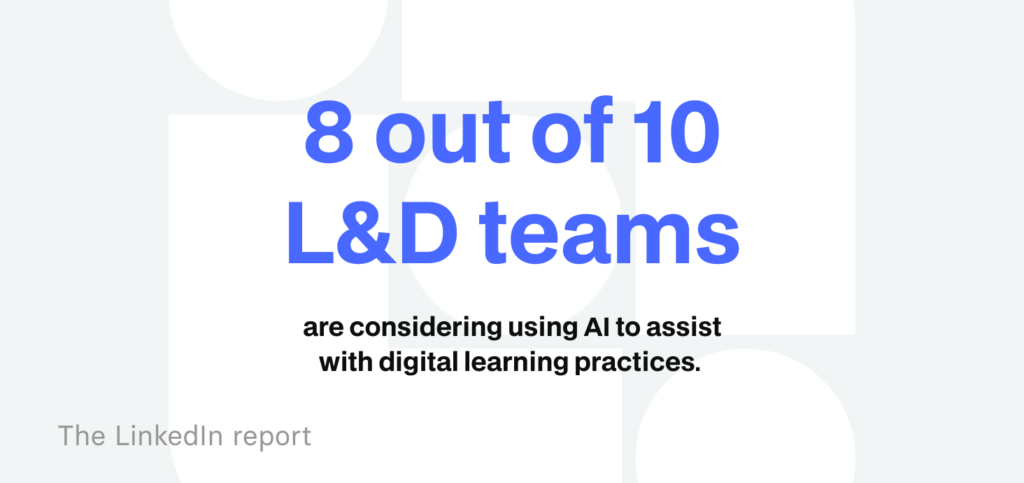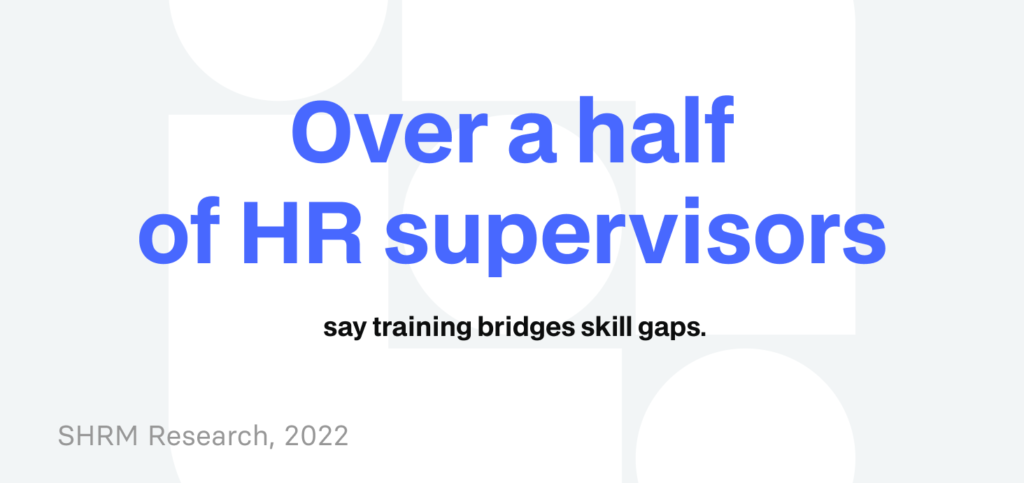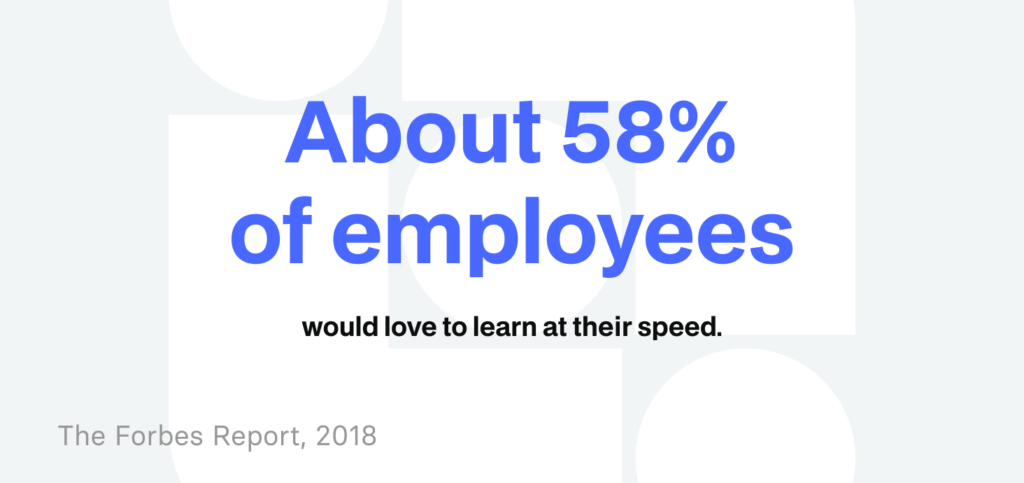Training and development (T&D) is a timeless evergreen concept in the modern world. The T&D initiatives include an innovative approach to teaching employees while building productive and inclusive workplaces that promote employee engagement in the working process and knowledge sharing. It is as diverse as everything from traditional classroom education to on-the-job side-by-side training and mentorship processes. There is no wonder that one of the foundational pillars that ensure an organization’s success has been staff training and development. The 2024 report demonstrates that 96% of L&D leaders agree on the crucial importance of digital learning in their overall L&D strategy for 2024.

With technology moving forward at a blink-and-you-miss pace, not to mention the way humans work now being infinitely more complicated, it is fair to ask whether the concept of training and development still has the same use today as it did yesterday. Is the twilight of training and development for employees a critical factor in organizational success in a rapidly evolving world? The LinkedIn report proves that 94% of participants would stay longer at a company or organization if it practices training and development opportunities for employees.

We shall delve into this question in this article by looking into a couple of key arguments. In one, we focus on the perennial importance of training and development term in creating meaningful engagement with employees while at the same time driving productivity and sparking imagination. We will also touch on some of the obstacles organizations face in implementing training and development courses and programs, and examine some emerging trends that may well become a part of how we develop organizations going forward.
The Evolution of Training and Development in Remote Working
Remote work has totally revolutionized how we used to work and learn. Technology is ever-advancing, globalization has become more profound and the trend towards a gig economy are all new factors that have changed the way we must address employee training and development. The State of Digital Learning Report 2024 by Elucidat says that 8 out of 10 L&D teams are considering using AI to assist with digital learning practices.

The Transformation of Work
The nature of work has changed drastically in the past few decades. No more top-down, and siloed job definitions. Today work is more fluid, social, and project-centric than ever before. This is how the world of the internet has melted away those distances, it is very common for people to be doing remote work or for companies themselves to have fully functioning teams virtually almost anywhere in the world. Therefore, training and development jobs have gained popularity.
The Impact of Technological Advancements, Globalization, and the Gig Economy
Over the years, work has evolved due to technological developments. However, the growth of technology that facility creating computers and smartphones work with a gamut of tools that square measure cloud-based has created operating just from any place possible. The new digital economy we now live in fueled globalization and created the world as a marketplace, enabling businesses to now leverage talent from across the globe. Due to that situation, people have formed leadership training and development in the creation of virtual teams, where specific communication and collaboration skills are required. Additionally, the gig economy (working from short-term contracts or freelance assignments) has made a rise in remote jobs. Research done in 2022 by SHRM, showed that over a half of HR supervisors believe the best way to bridge an organization’s skill gap is to consider more employee training and development.

The Shift from Traditional Classroom-Based Training
Remote learners need an online platform to develop crucial skills that cannot be learned through traditional classroom-based training models. Work has become more flexible and old-good in-person learning no longer fits all training and development needs. About 58% of employees would love to learn at their speed according to The Forbes Report, 2018. The shift towards more flexible and personalized learning approaches has been driven by several factors:
- Increased demand for continuous learning: The rapid pace of technological change and the need to adapt to new skills and knowledge require ongoing learning.
- The rise of e-learning: Online learning platforms and courses can be set up to facilitate learning at an individual’s own pace and convenience.
- The importance of personalized learning: Recognizing that individuals learn differently, personalized learning approaches can help to ensure that training is relevant and effective.

Key Trends in Remote Training and Development
Several key trends are shaping the future of training and development in the remote work era:
- Microlearning: Dividing training content into smaller, bite-size modules simplifies the learning process and boosts retention.
- Gamification: The infusion of play-like elements into training can be another fun and engaging way of training that employees receive.
- Virtual reality (VR) and augmented reality (AR): Software solutions and different online tools can be used by many organizations to achieve great results and provide their candidates with a realistic and immersive training experience.
- Artificial intelligence (AI)-powered training: You can personalize your training content and enable real-time feedback using artificial intelligence (AI).
The work landscape will keep evolving and so will the role of training and development process. Turning to new technologies and methods, these organizations will be able to provide their remote workforce with the requisite skills and knowledge, nevertheless the challenges of remote work for training and development.
Challenges of the “Training and Development” Term
Training and development, a little while ago referred to as human resource improvement, is not one of the longest-standing terms in organizational learning. Nonetheless, in recent years, many have begun to question its importance and its correctness as well.
Arguments for insist on terms familiarity, breadth, and simplicity here. In other words, it is a well-known term that has been used for years, includes diverse learning activities (skills development, personal enrichment), and is a clear and easy-to-remember term.
On the other side of that argument, changing the term supposes that it is outdated and does not speak to the way modern learning is conducted. There are other alternatives that are more narrow, focusing a lot on building skills and not enough on the broader development of an employee. It also lacks personalization and might indicate a one-size-fits-all way of learning.
Generally speaking, the growing debate about the appropriateness of using the term “training and development” instead of, or as an alternative to, “learning and development” has been actively discussed and gaining momentum in the L&D community for quite some time. Some argue that the terms are synonymous, others explain their stark differences, while some even suggest abandoning and removing “training and development” from use altogether, as it is considered inaccurate and outdated.
Analyzing different viewpoints, one can conclude that “learning” is a global phenomenon that embodies a “culture of continuous learning,” meaning it’s a constant process of acquiring knowledge. Meanwhile, “training” is a more narrowly focused process aimed at teaching a specific group of people essential skills. For example, teaching sales teams to use a product or tool. Thus, it can be stated that training does not concern broad knowledge.
It could be said that phrases like “we need to delete the ‘training’ term” are more like hype to increase post reach. People have given the word “training” a negative connotation.
Training and Development Examples of Alternatives to Consider:
- Learning and Development (L&D): This is a more common alternative, highlighting the more extensive range of learning activities across an organizational environment.
- Employee Experience: A term that has a focus on creating positive and meaningful experiences for the employees, which includes learning & development.
- Talent Development: This word emphasizes the development of employees as an organization’s assets.
In the end, whether or not to keep using “training and development” is going to come down to your organizational ethos. If it is working for you and resonates with your philosophy of learning and development, then ignore the debate. If you want a word that matches your objectives and values as a company, it might be worth exploring alternatives.
The phrase “training and development” has been the workhorse of organizational learning for eons. Nevertheless, over time its obstacles to represent the total scope of modern learning efforts have become obvious.
Outdated and Restrictive Perception of the Term
- Skill-focused: The term often implies a focus on specific skills or knowledge, which might not fully address the broader needs of employees in today’s dynamic workplace.
- Hierarchical: It can promote a hierarchical view of learning, which may suggest that employees are consumers and endpoints, not creators or facilitators of their own development.
- Transactional: It might be understood similarly to transactional terms in a way that learning is perceived as an expense or investment, rather than a strategic advantage.
Negative Connotations of the term “Training and Development”
- “Training”: This word can evoke images of rote memorization, drills, and compliance-based learning. It may not capture the personalized, experiential, and collaborative nature of modern learning initiatives.
- “Development”: While this term implies growth and improvement, it can also suggest a linear progression or a predetermined path, which may not align with the complex and non-linear nature of individual learning.
Benefits of Employee Training & Development
To fully capture the scope of modern learning initiatives, organizations need a term that reflects the following:
- Personalization: Learning tailored individually based on personalized preferences. Employees have opportunities to practice their skills, receive systematic guidance, and answer their own questions.
- Collaborative learning: Environments that foster teamwork, knowledge sharing, and innovation.
- Experiential learning: Providing experiences to the people allowing them to learn by participating, reflecting, and then applying the lessons learned.
- Continuous learning: Focus on the objective of “lifelong learning” makes it a leitmotif for corporate operations and organizational success.
Terms such as “employee experience,” “talent development,” or simply “learning” may better capture the broader scope of modern learning initiatives. Organizations that take a more inclusive and flexible approach to learning will garner a more compelling organizational culture that benefits employees.
Conclusion
In conclusion, it is worth noting that the term ‘training and development’ has been in use for millions of years. In today’s modern workplace, learning has seen a dramatic shift as the number of employees in organizations is limited to the number of laptops. However, talent development will be more suitable in today’s workplace due to the learning process. The term also keeps the focus on the employee experience and a continuous learning opportunity for his excellent performance at work. Updating the old technology and embracing new ones and approaches to support training will help a specific learner access training and development in any location.
FAQ
What is training and development?
Training and development (T&D) is a critical process in modern workplaces that involves teaching employees new skills, enhancing their existing knowledge, and helping them grow professionally. T&D includes a range of approaches, from traditional classroom learning to on-the-job training, mentorship programs, and digital learning platforms.
What is the role of HR in training and development?
HR plays a pivotal role in orchestrating training and development within an organization. Their responsibilities include identifying skill gaps, creating or selecting appropriate learning programs, and facilitating the adoption of new technologies for digital learning. HR also ensures that T&D initiatives align with the company’s broader strategy, promoting an inclusive and engaged workforce
What are the 5 steps in the training and development process?
The training and development process typically follows these five steps:
- Assessment of Needs
- Designing the Training Program
- Development of Materials
- Implementation
- Evaluation
